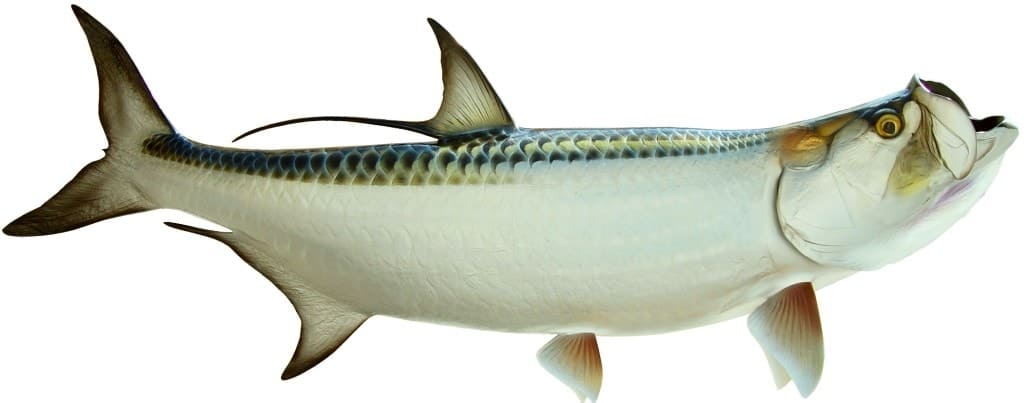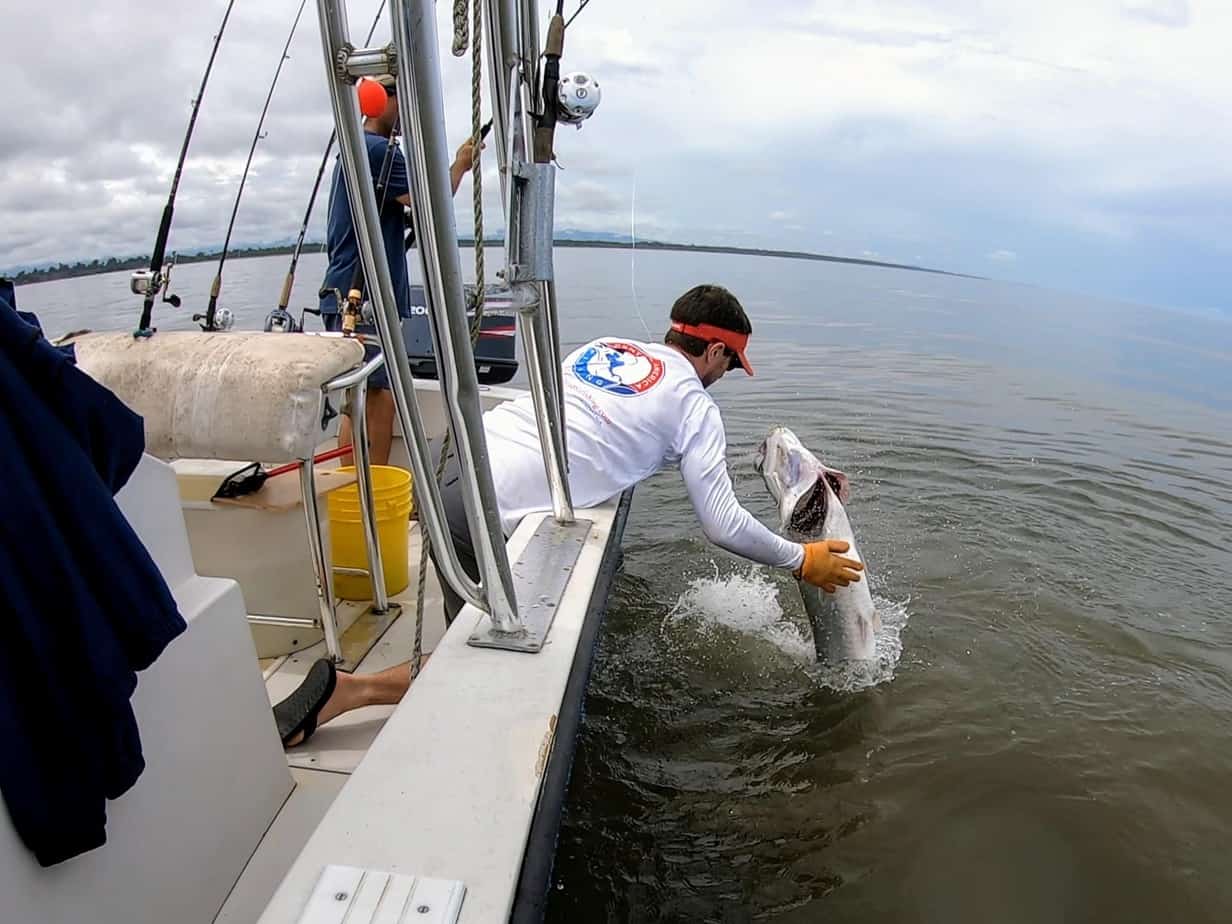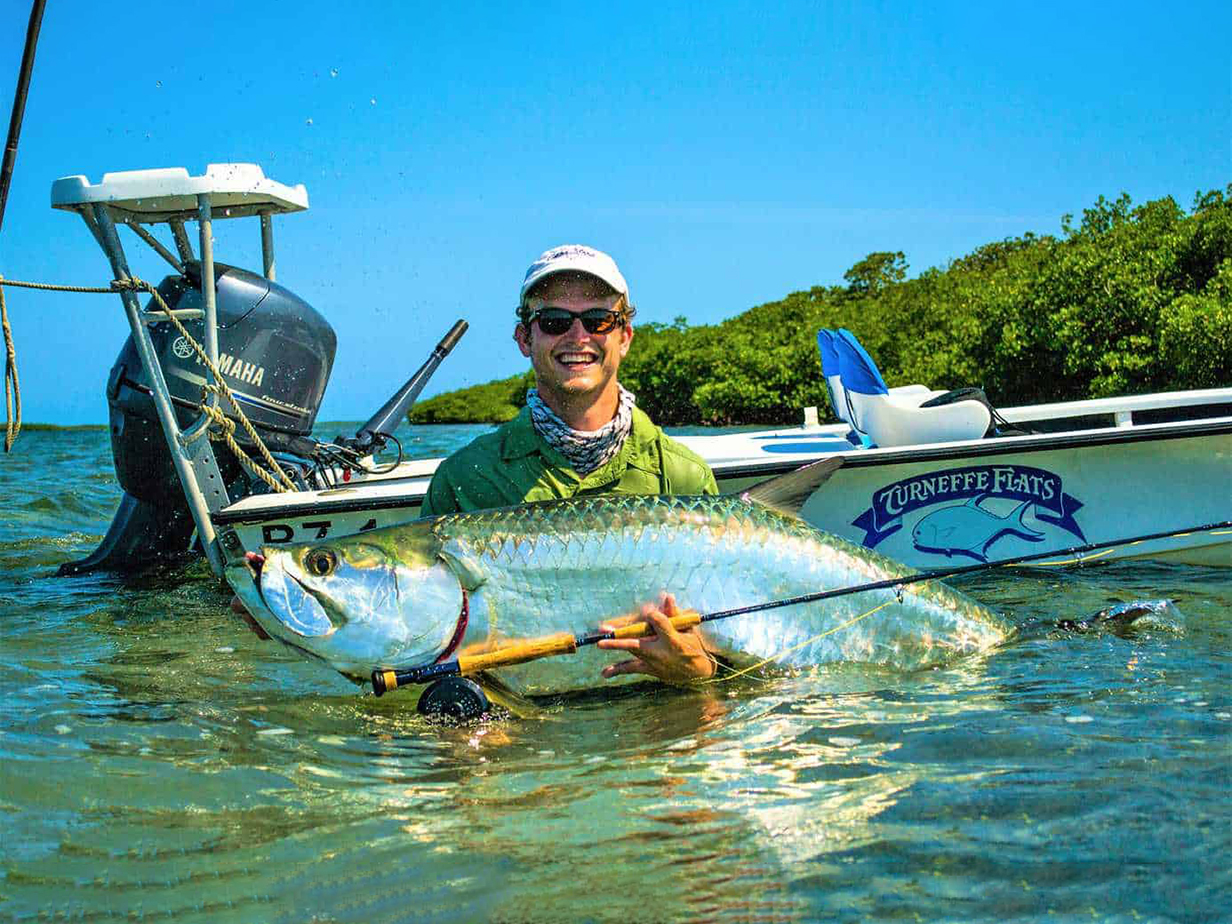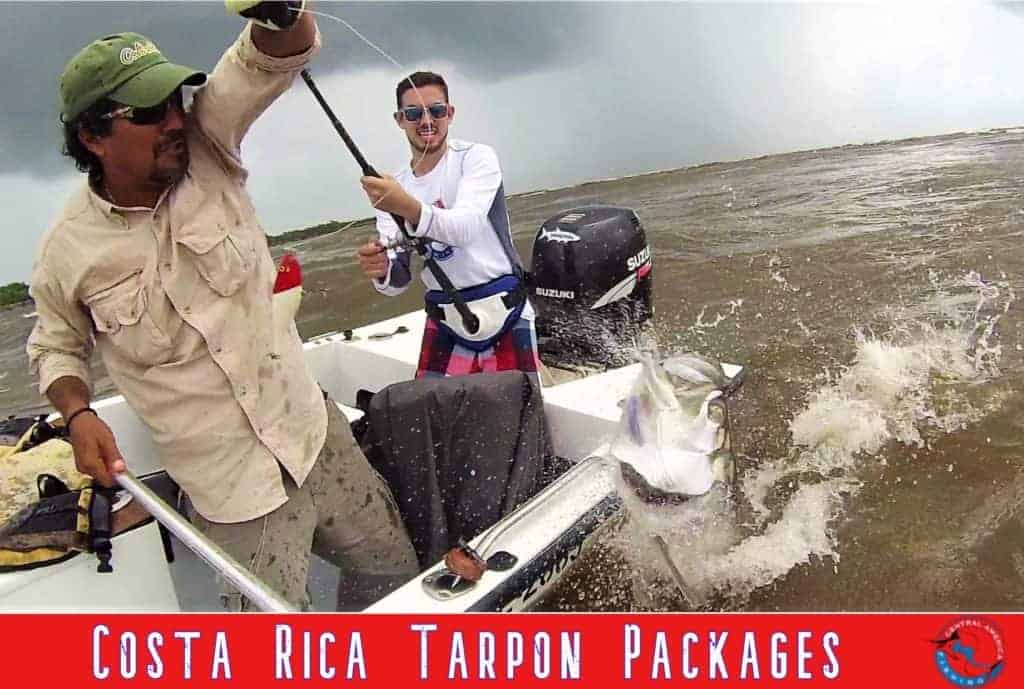Tarpon in Central America

Central America is the only place on Earth where tarpon are found on the Pacific Ocean as well. Having made their way through the Panama Canal over the past several decades, they have been caught as far south as Columbia and as far north as El Salvador. Tarpon can lay over 10 million eggs at a time and the survivors will take approximately seven years to reach maturity.
What Do Tarpon Eat?
What Is the World Record Tarpon?
How Big Are Tarpon in Central America?
The resident tarpon found in Belize are typically much smaller as they are often juveniles that are using the mangroves and flats as a refuge until they reach maturity. Many anglers love to specifically target these spirited youngsters on light tackle. Belize definitely sees its share of giants as well as the large, migratory adult tarpon roll through every year between April and September. These fish tend to be in the 70-80 lb range, but giants over 100 lbs are definitely available.
How to Catch Tarpon in Central America
In Costa Rica, the best tarpon fishing is found along the Caribbean Coast. Costa Rica’s Caribbean Coast is open ocean and deeper water, so you won’t find the reefs & flats like other parts of the Caribbean. Here we fish in the river mouths and along the coastline where we encounter mature, adult tarpon. Fishing live sardines, or even drifting dead sardines, baited on circle hooks is a great way to get bit. If those are not available or not productive, fishing with bucktail jigs is a tried and true method. We also fly fish for tarpon in Costa Rica, but this tends to be a lot of blind casting with a sinking tip line on a heavier 12 wt-14 wt rod. Tarpon in Costa Rica tend to be in the 70-100 lb range, with 150+ lb fish hooked every year.
Although Panama’s Caribbean Coast offers more mangroves and reefs than Costa Rica, we tend to fish for tarpon in the same spots and using the same methods. We also fish for tarpon in Panama on the Panama Canal itself, also known as Lake Gatun. Tarpon have been passing through the Canal for decades, so while rare, we do catch tarpon every year on the lake. Often times this happens when slow trolling rapalas for snook, but they can be targeted with live bait and fly fishing as well.
Belize Tarpon Fishing:
If you want to sight cast to tarpon, Belize is the spot to be. From juvenile tarpon found in the mangroves and on the flats to the large migratory tarpon that roll through every summer, Belize is a tarpon fishing haven. Most fly fishing guides will recommend a 10-11 wt rod with a 20 lb tippet when fly fishing for tarpon. For the spin fishers and conventional tackle anglers out there, tarpon in Belize can also be caught on sardines, jigs, and the occasional swim bait. With help from the Bonefish & Tarpon Trust, Belize became the first country in the world to mandate the catch and release of all tarpon in 2008.







